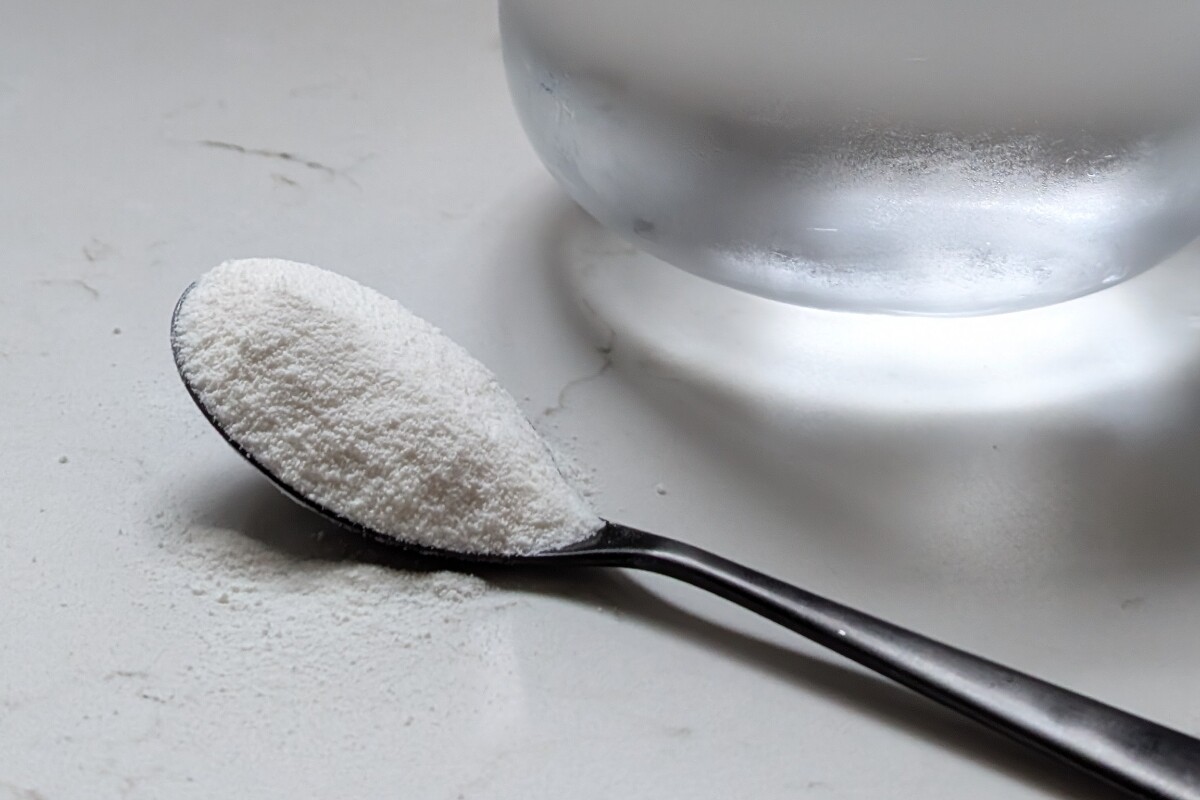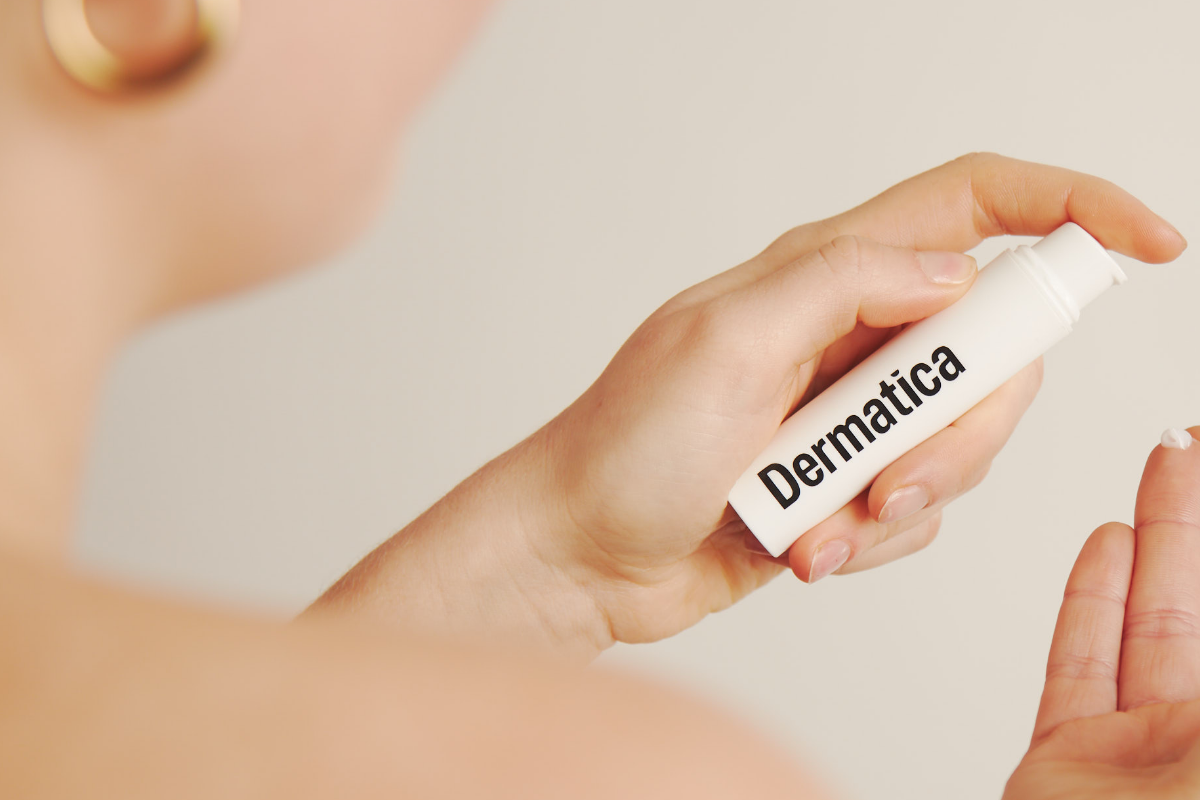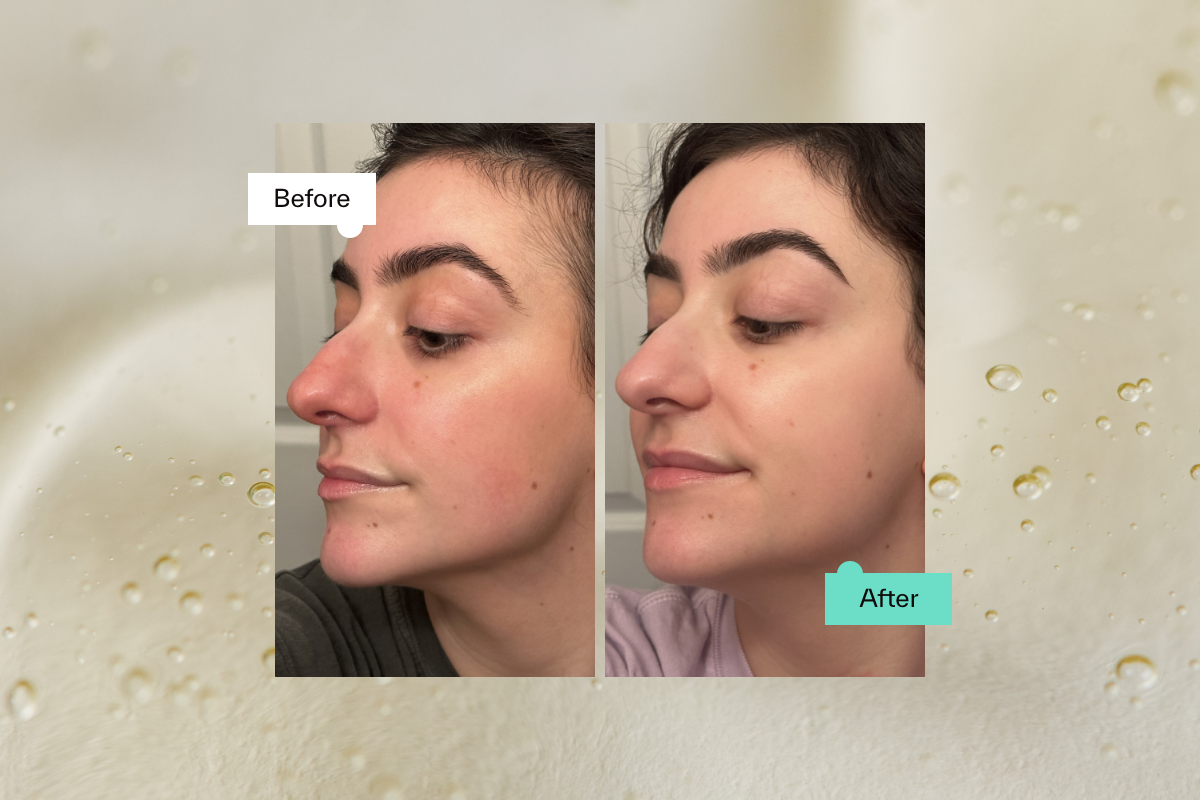Using topical retinoids like adapalene and tretinoin will help increase cell turnover. This is great for achieving bright, even skin, but can also lead to more dryness if you’re sensitive. You shouldn’t ditch these treatments when the weather gets colder, though. Instead, follow our dermatologist-approved tips to help you protect your skin barrier, so you can continue getting great results from your retinoid formula through the winter.
Here’s our quick guide to retinoids and their benefits. Already clued up? Scroll down to get straight to your winter skin tips.
________________
Retinoids: 101
What are retinoids?
Tretinoin, adapalene, retinol and retinal are all common types of retinoids, which are ingredients derived from vitamin A.
What do retinoids do?
There’s a reason why retinoids are a key ingredient for dermatologists. They can help you achieve a range of skin goals — targeting fine lines, treating acne, reducing pigmentation, clearing pores and ultimately giving you brighter, younger-looking skin. It’s the ultimate multitasker.
What side effects can retinoids cause?
When you first start using a topical retinoid, you may experience some side effects like dryness, peeling, breakouts and inflammation. This is called ‘retinisation’ and it happens because retinoids are starting to increase the skin cell turnover and exfoliate your skin.
With acne-prone skin, starting a retinoid might also lead to a breakout at the beginning, which is sometimes known as ‘purging’ — this is a process where your pores start to unclog and your dead skin cells begin shedding. Some people get side effects during this time, others won’t experience any at all. We know that these can sound worrying, but they generally only last for the first few weeks, then settle.
If your retinoid hasn’t been prescribed by a dermatology expert, we recommend keeping a close eye on your skin to see what it can handle. If the side effects are becoming hard to manage, it’s worth reducing how often you use it or making changes to the rest of your skincare routine to help your skin adapt.
Why does your skin appear dry or dull in winter?
Winter skin can look more dull and dry because there’s less moisture in the air. Dry skin in the winter can be uncomfortable, leading to blotches or a tight feeling. But with the right skin routine, there’s no need for a total overhaul.
There are lots of ways you can protect your barrier and keep side effects at bay over winter…
How to use retinoids in winter
Be generous with moisturiser
Stinging, tightness and burning are usually the first signs of irritation during winter. You’ll want to try and soothe any sensitivity at that point to avoid further peeling or inflammation. If your skin is dry, use a thicker moisturiser and apply it more frequently. Look out for ingredients like hyaluronic acid, glycerin, ceramides, panthenol or squalane when choosing your moisturiser — they have great hydration-boosting benefits and can protect the skin barrier.
Not a fan of heavy moisturisers? If you have oily skin and normally use a gel moisturiser, try switching to a lotion or lighter cream instead.
Try sandwiching your skincare
‘Sandwiching’ your retinol between layers of moisturiser adds an extra layer of protection for your skin barrier, which can help prevent side effects. You could also create a buffer around your eyes and mouth with petroleum jelly or moisturiser before applying your treatment to keep it away from the most sensitive areas of your face.
Skip the extra exfoliator step
If you’re worried about your skin being sensitive over winter, it’s a good idea to skip any extra exfoliating steps completely. Avoid using alpha- or beta-hydroxy acids (AHAs and BHAs), or any physical exfoliants (like scrubbing cleansers). Retinoids themselves are strong exfoliants, so adding more exfoliation products might lead to irritation. In general, we recommend completely avoiding physical exfoliants like cleansing brushes or scrubs, and to use AHAs and BHAs in cleansing products that you don’t leave on your skin. If you experience any irritation, these are the first things you should remove from your routine.
Miss a day or two
Not everyone’s skin can handle retinoids every day, and that sensitivity is only greater in winter. If your dryness or any other irritation is getting worse and you need some relief, cut down how often you use your treatment. Give your skin some time to get back to normal, and then gradually reintroduce it every two to three nights. If you’re using a ready-made product, check the packaging to make sure you’re not applying it too often. Remember, the key to best results is consistent retinoid use over a long period of time, so don’t worry about taking a break when your skin needs it.
Try a lower strength
It can take time to get used to retinoids, so if you haven’t started treatment yet, choose a milder retinoid or strength to begin with. At Dermatica, we introduce tretinoin at a low strength so your skin can adjust to it, or choose adapalene for people who are just starting an acne treatment. If you haven’t already found the right formulation for you, why not start a consultation today? Remember, you can request a formula review any time.
Don’t skip sun protection
We recommend applying our custom treatments nightly, and always wearing sunscreen during the day to keep your skin protected from the sun, even in winter.
Take extra care with rosacea
If you have rosacea, some skincare ingredients can trigger a flare-up. If your routine is working for you, then don’t change it. Make sure you’re using plenty of moisturiser to combat dryness from the cold weather, and keep an eye on your skin to make sure the actives in your routine aren’t causing inflammation. For more information on managing rosacea in winter, check out our blog post.
Want a skincare solution that’s personalised to you? Start a free online consultation today to speak to our dermatology experts, and get a personalised formula that’s right for your skin goals.
Dr Catriona Maybury
Dr Catriona Maybury is a Consultant Dermatologist, working as Medical Lead for Dermatica and at St George’s Hospital in London. Catriona completed her specialty training at St John’s Institute of Dermatology in London. Catriona has a special interest in medical dermatology, completing a PhD in liver fibrosis amongst psoriasis patients at King’s College London. Catriona is a certified coach and worked as Dermatology Section Editor for the British Medical Journal.





